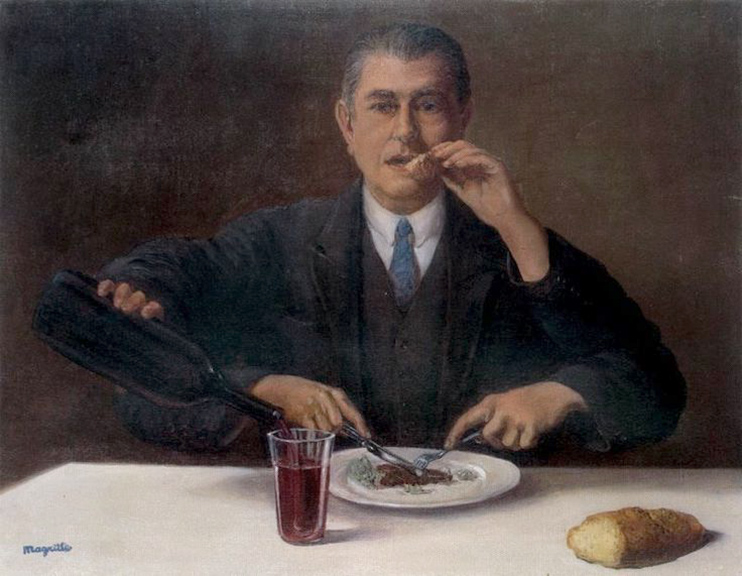The following essays are excerpted from René Magritte: Selected Writings edited by Kathleen Rooney and Eric Plattner and published by University of Minnesota Press, the first English-language collection from the painter (and writer).
Bourgeois Art
The bourgeois order is a disorder. Extreme confusion deprived of all contact with the world of necessity.
Those who profit from the capitalist confusion defend it by means of a bunch of sophisms and lies through which they attempt to influence all human activity.
And so they do not hesitate to affirm that the bourgeois social order has helped the development of culture to an extraordinary degree, and that art, for example, has conquered unexplored territories which, before, seemed inaccessible.
There is no longer any possible doubt. We must denounce this imposture. Our criticism does not spring from a desire to do battle, but is based solely on precise, strictly objective observation.
The very special value accorded to art by the bourgeoisie clearly shows up the futility of its aesthetic concepts, built up under the pressure of class interests totally alien to cultural concerns. The stratagem consists essentially in falsifying the natural relations between man and his world, so that it is no longer possible to use an object for itself, but always for motives which are totally unrelated to it. People do not want a diamond for its intrinsic properties -- its authentic qualities alone -- but because, as it costs a great deal, it gives the man who possesses it a kind of superiority over his fellow men, and is a concrete expression of social inequality. Besides, things have reached such an absurd point that if you buy a fake diamond unawares, you will be just as satisfied, because you have paid the price of the genuine article.
It is no different with art. Capitalist hypocrisy, always refusing to take a thing for what it is, attributes to art the characteristics of a superior activity, quite different from the activities of the average man. Whereas usually man MAKES something, accomplishes some task of no world-shattering significance, the bourgeois artist claims to EXPRESS high-flown sentiments that are merely subjective. In this case bourgeois individualism is pushed to the limit, an individualism that isolates man and allows each one to feel superior to all his fellow men with whom he has no real contact.
However it would be wrong to suppose that there have been no valid views on art formulated during the course of capitalist domination.
A Note to the Communist Party
The workers have been introduced to paintings in inauspicious conditions, caused by an initial confusion about the nature of artistic activity and political action. Whereas the struggle on the political level can, under the present circumstances, only claim the minimum -- the right to bread, for example -- the struggle of revolutionary artists can, under the present circumstances, claim the maximum: the victory of intellectual luxury -- this must not be abandoned.
When the workers met the artists, they were only given the chance to look at pictures which were strictly limited to the expression of political ideas and feelings, and the present mistake those responsible for the party’s cultural line are making is to encourage the workers to believe that these are the only kinds of pictures suitable for them.
To translate political ideas into pictures is useful to illustrate party posters, but it does not follow that the only valid role for the artist is to paint pictures exclusively confined to the class struggle, nor that the workers should be denied the pleasure of seeing pictures which would enrich their consciousness in quite a different way from the way this is done through class consciousness.
Class consciousness is a basic necessity, but this does not mean that the workers have to be condemned to bread and water and that it is wrong to wish for chicken and champagne. They are Communists precisely because they aspire to a higher life, worthy of man.
The Communist painter justifies his artistic activity by creating pictures that are an intellectual luxury, a luxury for a Communist society, differing -- it goes without saying -- from the useless, ostentatious and bad-taste luxury of the present exploitative classes.
If we wish to systematically exclude this luxury from the Socialist world we are consenting to an offensive, sordid mediocrity, at least in the intellectual domain.
A superior life cannot be conceived of without genuine luxury. We cannot win without the political struggle, nor without the difficult struggle that certain revolutionary artists are engaged in, those who do not limit their efforts to expressing political ideas alone, or representing familiar scenes from the life of the workers for the purpose of general edification.
